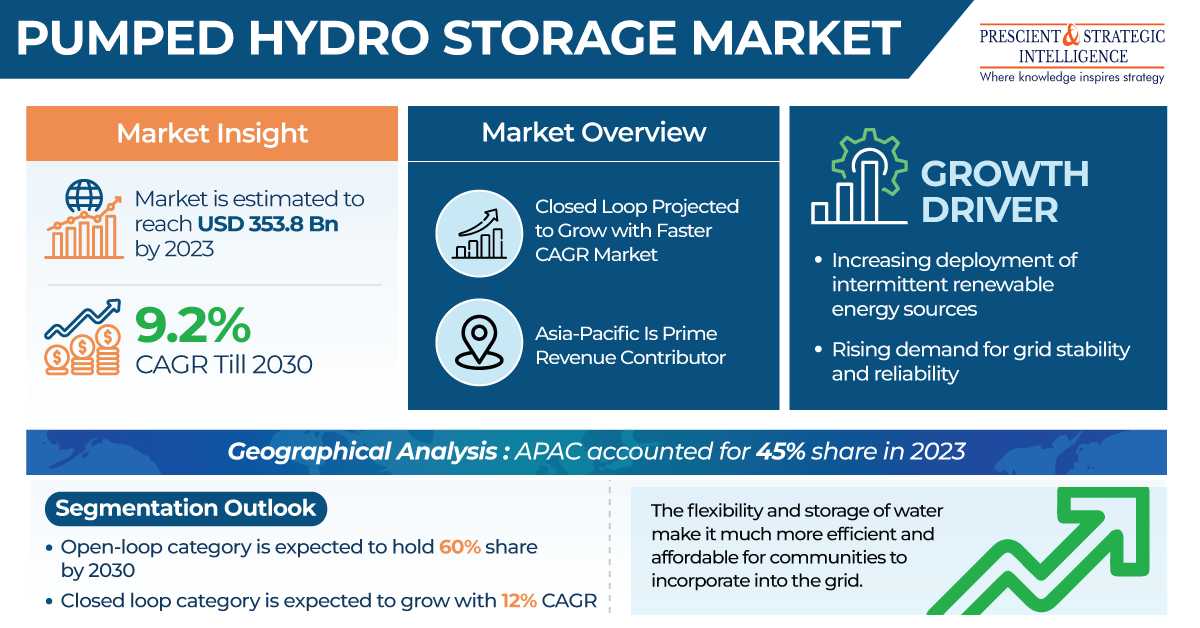Loop Category to Grow Faster in Pumped Hydro Storage Market
The pumped hydro storage market was USD 353.8 billion in 2023, and it will reach to USD 643.9 billion by 2030, powering at a rate of 9.2% by the end of this decade.
Get More Insights: https://www.psmarketresearch.c....om/market-analysis/p
The important factors powering the industry growth are growing deployment of intermittent renewable energy sources, for example solar and wind power; increasing requirement for grid stability and dependability; and stringent regulations of the government aiming to decrease the emissions of carbon.
Apart from this, the long operational lifetimes and a moderately low environmental impact as opposed to other energy storage technologies make them a rather feasible option for power grids.
With the growing urbanization and rising global population, energy demand worldwide has grown exponentially in the recent past. As per a UN report, the population of the world in 2022 of 8 billion will reach 9.8 billion by 2050.
Furthermore, most of the energy is produced from fossil fuels, emitting harmful GHGs into the atmosphere upon burning.
On the basis of type, the closed loop category will grow faster at around 12% in the years to come. This has a lot to do with the high flexibility, dependability, and power output of this tech.
Furthermore, it has a lower environmental impact, as it does not make use of water from lakes or rivers. These systems can be set up where grid support is needed; consequently, they need not be situated near a river.
Apart from this, they are more effective, as there is no requirement to evaporate water from the lower reservoir. As per the NREL analysis, closed-loop pumped storage has the lowest Global Warming Potential.
APAC leads the pumped hydro storage market, with a share of about 45%, in 2023, credited to the snowballing installation of pumped hydro stowage capacity.
Additionally, the fast economic growth has brought about increased consumption of energy, which PHS can help meet, along with supporting industrial expansion. This is because this stowage tech is the most-scalable sort of energy storage solution as opposed to other solutions, for example hydrogen fuel cells, battery storage, and gravity battery storage.
India has a substantial potential for pumped hydro stowage as there are more than a few locations in the country, ideal for pumped storage projects, for example lakes, river valleys, and dams. The government of India wants to install 20 GW of pumped storage capacity by the end of this decade.
Because of the increasing demand for grid stability and reliability all over the world, the demand for pumped hydro storage is on the rise. This will continue like this in the years to come as well.
Source: P&S Intelligence


